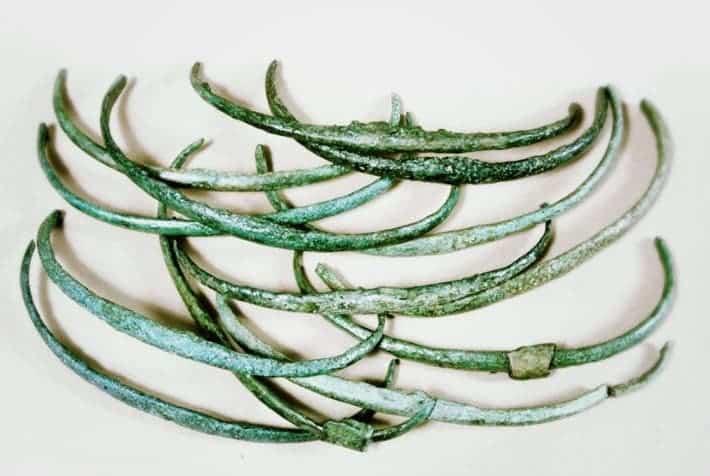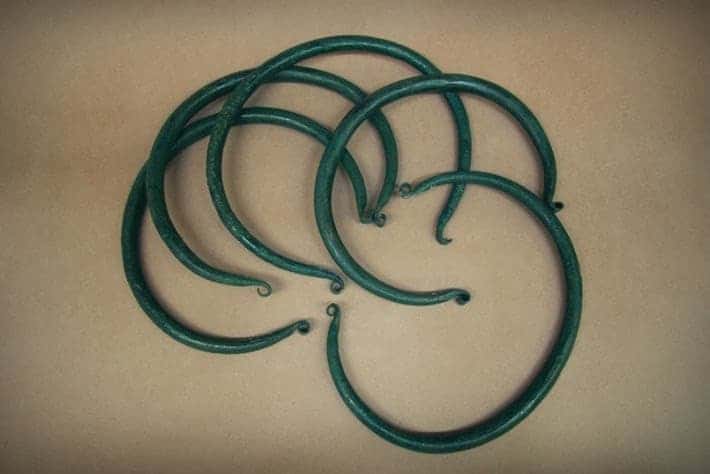
Money makes the world go round, and it all may have started more than 5,000 years ago. In a new study, researchers have described what they believe to be one of the earliest examples of currency. Only instead of paper bills or metal coins, these 5,000-year-old denominations took the form of bronze rings, ribs, and even axe blades.
The odd-looking currencies were identified by a team of researchers at Leiden University in the Netherlands, who examined over 5,000 such objects from more than 100 ancient hoards of artifacts from Europe, ranging from Germany to Scandinavia.
Although some of the objects don’t conjure the familiar image of ‘money’, the researchers are confident they served as currency due to their weight, which falls within the Weber fraction — the idea that if objects differ by very little in mass, a human weighing them by hand won’t tell the difference.
The team performed a statistical analysis of the weighted objects, finding that around 70% of the rings were similar enough to be indistinguishable by hand, averaging 195 grams in mass. Similar results were reported for the bronze ribs and axe blades.
“The euros of Prehistory came in the form of bronze rings, ribs and axes. These Early Bronze Age artefacts were standardized in shape and weight and used as an early form of money,” the researchers said.

When and how money first appeared is the subject of ongoing research. It also depends on how you define money, which can be either a means of exchange or a means of account (i.e. credit). What’s certain is that initially, people bartered, making direct trades between two parties of desirable objects.
The fact that these objects occurred in hoards and had consistently similar shape and weight, led the researchers to conclude that these objects were employed as a very early form of standardized currency. As technology improved, Middle Bronze Age people in Europe had access to more sophisticated weighing tools that allowed them to mint currencies that had a much more uniform shape and weight, unbiased by the human perception by hand.
According to the researchers, bronze ribs and other objects were a game-changer in the ancient world due to their ability to be duplicated by casting the metal in molds. Over time, these copies naturally gave rise to an abstract concept of weight. Later, such rudimentary forms of money were replaced by coinage which proved extremely successful, largely due to its portability, durability, and the high degree of control of production that it offered to political leaders (hence the state).
And although the ancient objects don’t look like money as we imagine it today, their shape isn’t all that surprising, falling under so-called utensil currency. Elsewhere, scientists have found money shaped like knives and spades in China or like a hoe and axe in Mesoamerica. Alternatively, people have even used live animals such as cows as a form of currency, but the age of this practice is difficult to assess for obvious reasons. Officially, the first known form of currency is believed to be the Mesopotamian shekel, which emerged nearly 5,000 years ago.
The findings appeared in the journal PLOS ONE.









